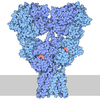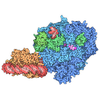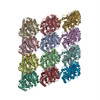+ データを開く
データを開く
- 基本情報
基本情報
| 登録情報 | データベース: PDB / ID: 8v4l | ||||||
|---|---|---|---|---|---|---|---|
| タイトル | CCP5 in complex with microtubules class2 | ||||||
 要素 要素 |
| ||||||
 キーワード キーワード | HYDROLASE/SUBSTRATE / STRUCTURAL PROTEIN / carboxypeptidase deglutamylation branch glutamate removal microtubule / HYDROLASE / HYDROLASE-SUBSTRATE complex / HYDROLASE-SUBSTRATE / STRUCTURAL PROTEIN complex | ||||||
| 機能・相同性 |  機能・相同性情報 機能・相同性情報tubulin-glutamate carboxypeptidase / protein deglutamylation / protein side chain deglutamylation / protein branching point deglutamylation / C-terminal protein deglutamylation / Carboxyterminal post-translational modifications of tubulin / Microtubule-dependent trafficking of connexons from Golgi to the plasma membrane / Resolution of Sister Chromatid Cohesion / Hedgehog 'off' state / Cilium Assembly ...tubulin-glutamate carboxypeptidase / protein deglutamylation / protein side chain deglutamylation / protein branching point deglutamylation / C-terminal protein deglutamylation / Carboxyterminal post-translational modifications of tubulin / Microtubule-dependent trafficking of connexons from Golgi to the plasma membrane / Resolution of Sister Chromatid Cohesion / Hedgehog 'off' state / Cilium Assembly / Intraflagellar transport / COPI-dependent Golgi-to-ER retrograde traffic / Mitotic Prometaphase / Carboxyterminal post-translational modifications of tubulin / RHOH GTPase cycle / EML4 and NUDC in mitotic spindle formation / Sealing of the nuclear envelope (NE) by ESCRT-III / Kinesins / PKR-mediated signaling / Separation of Sister Chromatids / The role of GTSE1 in G2/M progression after G2 checkpoint / Aggrephagy / RHO GTPases activate IQGAPs / RHO GTPases Activate Formins / HSP90 chaperone cycle for steroid hormone receptors (SHR) in the presence of ligand / MHC class II antigen presentation / Recruitment of NuMA to mitotic centrosomes / COPI-mediated anterograde transport / 加水分解酵素; プロテアーゼ; ペプチド結合加水分解酵素; 金属プロテアーゼ / metallocarboxypeptidase activity / tubulin binding / structural constituent of cytoskeleton / microtubule cytoskeleton organization / neuron migration / mitotic spindle / mitotic cell cycle / microtubule cytoskeleton / midbody / 加水分解酵素; 酸無水物に作用; GTPに作用・細胞または細胞小器官の運動に関与 / defense response to virus / microtubule / GTPase activity / GTP binding / proteolysis / zinc ion binding / metal ion binding / nucleus / cytosol / cytoplasm 類似検索 - 分子機能 | ||||||
| 生物種 |  Homo sapiens (ヒト) Homo sapiens (ヒト) | ||||||
| 手法 | 電子顕微鏡法 / 単粒子再構成法 / クライオ電子顕微鏡法 / 解像度: 2.9 Å | ||||||
 データ登録者 データ登録者 | Chen, J. / Zehr, E.A. / Gruschus, J.M. / Szyk, A. / Liu, Y. / Tanner, M.E. / Tjandra, N. / Roll-Mecak, A. | ||||||
| 資金援助 |  米国, 1件 米国, 1件
| ||||||
 引用 引用 |  ジャーナル: Nature / 年: 2024 ジャーナル: Nature / 年: 2024タイトル: Tubulin code eraser CCP5 binds branch glutamates by substrate deformation. 著者: Jiayi Chen / Elena A Zehr / James M Gruschus / Agnieszka Szyk / Yanjie Liu / Martin E Tanner / Nico Tjandra / Antonina Roll-Mecak /   要旨: Microtubule function is modulated by the tubulin code, diverse posttranslational modifications that are altered dynamically by writer and eraser enzymes. Glutamylation-the addition of branched ...Microtubule function is modulated by the tubulin code, diverse posttranslational modifications that are altered dynamically by writer and eraser enzymes. Glutamylation-the addition of branched (isopeptide-linked) glutamate chains-is the most evolutionarily widespread tubulin modification. It is introduced by tubulin tyrosine ligase-like enzymes and erased by carboxypeptidases of the cytosolic carboxypeptidase (CCP) family. Glutamylation homeostasis, achieved through the balance of writers and erasers, is critical for normal cell function, and mutations in CCPs lead to human disease. Here we report cryo-electron microscopy structures of the glutamylation eraser CCP5 in complex with the microtubule, and X-ray structures in complex with transition-state analogues. Combined with NMR analysis, these analyses show that CCP5 deforms the tubulin main chain into a unique turn that enables lock-and-key recognition of the branch glutamate in a cationic pocket that is unique to CCP family proteins. CCP5 binding of the sequences flanking the branch point primarily through peptide backbone atoms enables processing of diverse tubulin isotypes and non-tubulin substrates. Unexpectedly, CCP5 exhibits inefficient processing of an abundant β-tubulin isotype in the brain. This work provides an atomistic view into glutamate branch recognition and resolution, and sheds light on homeostasis of the tubulin glutamylation syntax. | ||||||
| 履歴 |
|
- 構造の表示
構造の表示
| 構造ビューア | 分子:  Molmil Molmil Jmol/JSmol Jmol/JSmol |
|---|
- ダウンロードとリンク
ダウンロードとリンク
- ダウンロード
ダウンロード
| PDBx/mmCIF形式 |  8v4l.cif.gz 8v4l.cif.gz | 446.1 KB | 表示 |  PDBx/mmCIF形式 PDBx/mmCIF形式 |
|---|---|---|---|---|
| PDB形式 |  pdb8v4l.ent.gz pdb8v4l.ent.gz | 354 KB | 表示 |  PDB形式 PDB形式 |
| PDBx/mmJSON形式 |  8v4l.json.gz 8v4l.json.gz | ツリー表示 |  PDBx/mmJSON形式 PDBx/mmJSON形式 | |
| その他 |  その他のダウンロード その他のダウンロード |
-検証レポート
| 文書・要旨 |  8v4l_validation.pdf.gz 8v4l_validation.pdf.gz | 1.1 MB | 表示 |  wwPDB検証レポート wwPDB検証レポート |
|---|---|---|---|---|
| 文書・詳細版 |  8v4l_full_validation.pdf.gz 8v4l_full_validation.pdf.gz | 1.1 MB | 表示 | |
| XML形式データ |  8v4l_validation.xml.gz 8v4l_validation.xml.gz | 60.1 KB | 表示 | |
| CIF形式データ |  8v4l_validation.cif.gz 8v4l_validation.cif.gz | 91.6 KB | 表示 | |
| アーカイブディレクトリ |  https://data.pdbj.org/pub/pdb/validation_reports/v4/8v4l https://data.pdbj.org/pub/pdb/validation_reports/v4/8v4l ftp://data.pdbj.org/pub/pdb/validation_reports/v4/8v4l ftp://data.pdbj.org/pub/pdb/validation_reports/v4/8v4l | HTTPS FTP |
-関連構造データ
| 関連構造データ |  42972MC  8v3mC  8v3nC 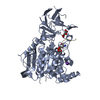 8v3oC 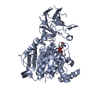 8v3pC 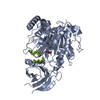 8v3qC 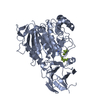 8v3rC 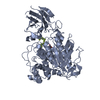 8v3sC  8v4kC 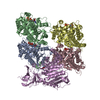 8v4mC C: 同じ文献を引用 ( M: このデータのモデリングに利用したマップデータ |
|---|---|
| 類似構造データ | 類似検索 - 機能・相同性  F&H 検索 F&H 検索 |
- リンク
リンク
- 集合体
集合体
| 登録構造単位 | 
|
|---|---|
| 1 |
|
- 要素
要素
-タンパク質 , 3種, 5分子 ACBDE
| #1: タンパク質 | 分子量: 50204.445 Da / 分子数: 2 / 由来タイプ: 天然 / 由来: (天然)  #2: タンパク質 | 分子量: 50377.309 Da / 分子数: 2 / 由来タイプ: 天然 詳細: Beta tubulin from porcine brain microtubules, heterogeneous in tail sequence 由来: (天然)  #3: タンパク質 | | 分子量: 68229.547 Da / 分子数: 1 / Fragment: residues 2-605 / Mutation: E516A / 由来タイプ: 組換発現 / 由来: (組換発現)  Homo sapiens (ヒト) / 遺伝子: AGBL5 / プラスミド: pFastBac / 詳細 (発現宿主): His_MBP_Asn10_TEV Homo sapiens (ヒト) / 遺伝子: AGBL5 / プラスミド: pFastBac / 詳細 (発現宿主): His_MBP_Asn10_TEV発現宿主:  株 (発現宿主): IPLB-Sf-21-AE / 参照: UniProt: Q8NDL9 |
|---|
-非ポリマー , 5種, 10分子 
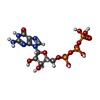
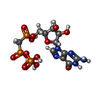
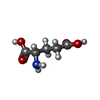





| #4: 化合物 | ChemComp-MG / #5: 化合物 | #6: 化合物 | #7: 化合物 | ChemComp-GLU / | #8: 化合物 | ChemComp-ZN / | |
|---|
-詳細
| 研究の焦点であるリガンドがあるか | Y |
|---|---|
| Has protein modification | Y |
| 配列の詳細 | Brain tubulin contains multiple tubulin isotypes. The tubulin body was modeled using the sequence ...Brain tubulin contains multiple tubulin isotypes. The tubulin body was modeled using the sequence of betaII, the most abundant isotype in brain. The residues in the variable tails are modeled as UNK. |
-実験情報
-実験
| 実験 | 手法: 電子顕微鏡法 |
|---|---|
| EM実験 | 試料の集合状態: PARTICLE / 3次元再構成法: 単粒子再構成法 |
- 試料調製
試料調製
| 構成要素 | 名称: CCP5 in complex with microtubules / タイプ: COMPLEX / 詳細: Composite structure of CCP5:microtubule class#2 / Entity ID: #1-#3 / 由来: MULTIPLE SOURCES | ||||||||||||||||||||
|---|---|---|---|---|---|---|---|---|---|---|---|---|---|---|---|---|---|---|---|---|---|
| 分子量 | 実験値: NO | ||||||||||||||||||||
| 緩衝液 | pH: 7.4 | ||||||||||||||||||||
| 緩衝液成分 |
| ||||||||||||||||||||
| 試料 | 濃度: 0.3 mg/ml / 包埋: NO / シャドウイング: NO / 染色: NO / 凍結: YES | ||||||||||||||||||||
| 試料支持 | グリッドの材料: GOLD / グリッドのタイプ: Au-flat 1.2/1.3 | ||||||||||||||||||||
| 急速凍結 | 装置: LEICA EM GP / 凍結剤: ETHANE / 湿度: 90 % / 凍結前の試料温度: 303 K |
- 電子顕微鏡撮影
電子顕微鏡撮影
| 実験機器 | 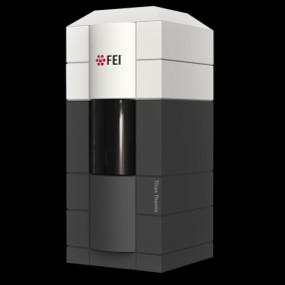 モデル: Titan Krios / 画像提供: FEI Company |
|---|---|
| 顕微鏡 | モデル: FEI TITAN KRIOS |
| 電子銃 | 電子線源:  FIELD EMISSION GUN / 加速電圧: 300 kV / 照射モード: FLOOD BEAM FIELD EMISSION GUN / 加速電圧: 300 kV / 照射モード: FLOOD BEAM |
| 電子レンズ | モード: BRIGHT FIELD / 倍率(公称値): 135000 X / 最大 デフォーカス(公称値): 2200 nm / 最小 デフォーカス(公称値): 800 nm / Cs: 2.7 mm / C2レンズ絞り径: 70 µm / アライメント法: COMA FREE |
| 試料ホルダ | 凍結剤: NITROGEN |
| 撮影 | 平均露光時間: 1.651 sec. / 電子線照射量: 53.34 e/Å2 / フィルム・検出器のモデル: GATAN K3 (6k x 4k) |
| 電子光学装置 | エネルギーフィルタースリット幅: 20 eV |
- 解析
解析
| EMソフトウェア | 名称: PHENIX / カテゴリ: モデル精密化 | |||||||||||||||||||||
|---|---|---|---|---|---|---|---|---|---|---|---|---|---|---|---|---|---|---|---|---|---|---|
| CTF補正 | タイプ: NONE | |||||||||||||||||||||
| 粒子像の選択 | 選択した粒子像数: 162521 | |||||||||||||||||||||
| 対称性 | 点対称性: C1 (非対称) | |||||||||||||||||||||
| 3次元再構成 | 解像度: 2.9 Å / 解像度の算出法: FSC 0.143 CUT-OFF / 粒子像の数: 114611 / 対称性のタイプ: POINT | |||||||||||||||||||||
| 原子モデル構築 | プロトコル: RIGID BODY FIT / 空間: REAL / Target criteria: Cross-correlation coefficient | |||||||||||||||||||||
| 原子モデル構築 |
|
 ムービー
ムービー コントローラー
コントローラー



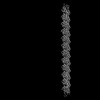







 PDBj
PDBj

